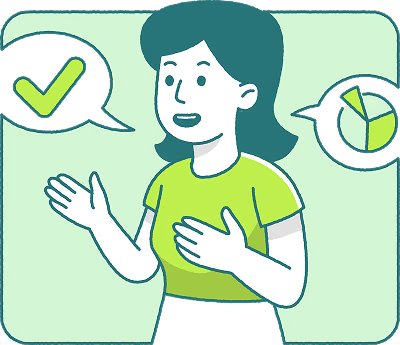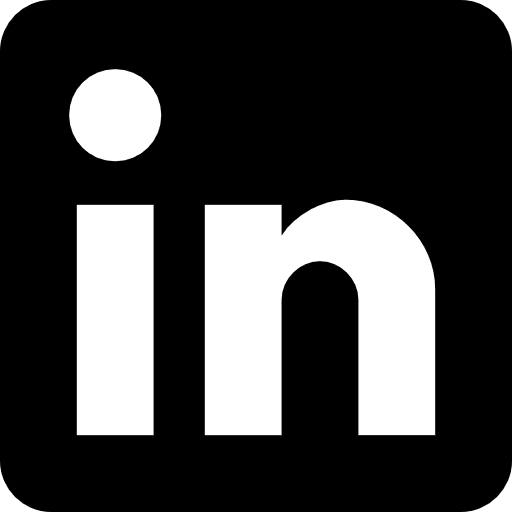Upstart’s secret sauce to signal & creative optimization that led to 2x lead volume
Upstart was scaling spend but losing efficiency—until Abhi Mehta flipped the script on signal optimization. By rotating conversion events and pairing it with aggressive creative testing, the team 2x’d lead volume and lowered CPFL. This playbook breaks down the system that made it happen.

What you'll learn





More about the expert
The Wall No One Warns You About
What happens when you're spending millions and returns stop scaling.
When Upstart ramped Meta ad spend to $3M+ per month for its core lending products—personal loans and auto refinance—performance started to wobble. Their north star metric, Cost Per Funded Loan (CPFL), began climbing.
And not by a little.
As they pushed spend from $3M to $3.5M, CPFL jumped by over 30%, and incremental CPFL increased by 25–30%. They were still driving volume—but at a price point that exceeded target LTVs and tanked efficiency.
“We hit a point where an extra $500K didn’t give us better leads—it gave us more expensive ones,” Abhi said.
Traditional growth levers?
Tapped out.

It’s not that they weren’t diversified. Abhi’s team was actively running direct mail, affiliates, paid search, YouTube, and other channels. But Meta remained the largest lever in their paid acquisition mix—because it was the only one with the scale and reach to absorb additional budget at the pace they needed.
In the early stages, Meta worked. It drove high intent users quickly and at cost. But once saturation set in, adding more budget started to break the system.
That’s when the team turned inward—not to cut spend, but to rethink what they were telling the algorithm to optimize for.
Signal Optimization 101: Let The Algorithm Cook
Your ad platform is smart—but only if you feed it the right breadcrumbs.
Signal optimization means choosing the right conversion event for Meta (or any platform) to optimize against. That signal tells the algorithm what kind of user to go find.
Upstart’s funnel looked like this:
- User lands on site
- Fills out a form
- Gets a rate offer (Got Rate)
- Accepts the rate (Accepted Rate)
- Completes verification → funds the loan (Funded Loan)
Originally, campaigns optimized for Got Rate. But over time, scale fatigue started creeping in.
Not creative fatigue—signal fatigue. After hitting a large portion of their total addressable market (TAM) month after month, Meta’s algorithm was starting to get stale.
Click-through rates were dropping, frequency was climbing, and the same signal pool was being hit over and over again.
So the team moved downstream—to Funded Loan.
Logical, right? Go deeper for higher intent.
Except… it bombed.
The delay between ad click and conversion was too long. The algorithm couldn’t get real-time feedback. Plus, iOS 14 changes made in-platform attribution fuzzy.
Performance tanked.
Another 30% increase in CPFL. The deeper event gave better intent, but not enough volume or speed to keep Meta’s machine-learning engine running efficiently.
The Mid-Funnel Sweet Spot
How a not-too-deep, not-too-shallow signal hit the Goldilocks zone.
Next, the team tested the Accepted Rate. It fired faster than Funded Loan, carried meaningful intent, and gave the algorithm a lot more to work with.
Why this event? It was the Goldilocks signal—not too early to be noisy, not too late to be slow. Accepted Rate was a strong proxy for the users they ultimately cared about (those who funded), but it happened earlier in the journey and in higher volume. That meant Meta’s algorithm had more real-time data to train on—without losing targeting precision.
The result?
- CPFL went down
- Volume went up
- Scaled to $3.5M/month profitably
But of course… good things don’t last.
After a few months, CPFL crept back up. They were stuck in déjà vu.
When in Doubt, Flip the Signal
How rotating optimization events unlocked sustainable scale.
Instead of endlessly chasing the “perfect” event, Abhi’s team did something unexpected—they started switching between optimization events on a regular cadence.
After a few months of optimizing for Accepted Rate, CPFL began creeping up again. So they went back up-funnel to Got Rate—and surprisingly, it worked better than before. Unfortunately, CPFL started dropping. Again.
Why?
Abhi’s Hypothesis: Meta’s algorithm had grown fatigued. After months of training on Accepted Rate it was stuck in a narrow signal pool. By switching events, they refreshed the signal and gave the algorithm new data to work with.
This kicked off a rotation strategy:
Every 3–4 months, they would toggle between Got Rate and Accepted Rate. Because around the 3-month mark, they consistently saw key metrics like CTR dropping, frequency rising, and user intent softening. Too soon, and the algorithm would get stuck in learning mode. Too late, and performance would already be tanking.
The rotation cadence became their rhythm:
- Swap the optimization event every few months
- Watch for early fatigue signals (CTR, frequency, CPFL)
- Rinse, repeat
It wasn’t glamorous. But it worked. Over a year, this strategy helped Upstart double lead volume, scale to $5M+ in monthly spend, and lower CPFL below where they started.
A playbook that proved: sometimes, the smartest move isn’t finding a new signal—it’s keeping your current ones from going stale.
How They Ran The Tests
Not everything needs an A/B test—especially at $5M/month.
With large-scale spend, clean test design becomes tricky. Splitting budget between test cells can distort results by starving the algorithm of volume.
So instead of cell-based tests, they used a difference-over-difference method:
- Run Business-As-Usual campaigns with Event A for 4 months
- Switch to Event B with everything else constant
- Compare deltas in key metrics (CPFL, CTR, conversion rates)
- Normalize for seasonality
This method worked because of their high volume and access to MMM (Marketing Mix Modeling), which served as their source of truth—not in-platform Meta numbers.
They ignored the vanity metrics (i.e. CTR, CPC, impressions, engagement rate) and looked at what actually drove funded loans.
Creatives Get Tired Too
Why creative testing was the second engine behind growth.
At their scale, creative fatigue was a huge bottleneck. Before the revamp, the team used to toss new creatives straight into their core BAU campaigns, hoping they’d outperform the incumbents.
But there was a problem: those core campaigns were already stacked with high-signal, top-performing assets. New creatives couldn’t get enough spend allocation to prove themselves—or even gain traction.
So most test assets failed before they had a real shot.
That bottleneck pushed the team to rethink their creative testing pipeline from the ground up. The rebuild looked like this:
- 18 new creatives tested every month
- 20% success rate was considered a win
- All testing done in isolated ad sets (aka "creative sandbox")
- Winners promoted to core campaigns, replacing underperformers

Every month, they aimed for:
- At least 2–4 new creatives to enter the core mix
- A 5%+ reduction in cost per got rate from creative improvements alone
Big Brain Energy: Where the Creative Magic Starts
Abhi’s team needed a constant stream of concepts but they weren’t just relying on trial and error. Each idea had a purpose, a data trail, and a spark of originality behind it.
Here’s how they kept the ideas flowing:
- Data-driven iterations from previous winners
- Agency partners supplying UGC and branded variations
- Competitor audits to reverse-engineer patterns
- Internal brainstorms for out-of-the-box concepts
In no time, they begain churning amazing creatives like the ones below.

They ran monthly creative reviews, surfacing insights like:
- Which value propositions were resonating
- What formats (statics, video, UGC) drove CTR
- Whether a specific creative performed better for a certain signal type (spoiler: usually not)
While Upstart had a strong core offer, they didn’t treat value propositions as static. The team revisited them regularly—not to reinvent the wheel, but to refine how each message was framed, delivered, and contextualized in creative. Sometimes, a shift in tone or visual pairing was all it took to turn a “meh” asset into a top performer.
In other words, they didn’t just test design.
They tested messaging, too.
No Budget? No Problem. Run the Upstart Playbook
You don't need $5M/month to apply the strategy.
Abhi’s Take: Signal optimization applies to startups too—just on a smaller scale.
If you’re spending $50K–$100K/month and not seeing scale, try optimizing for a higher-volume event (like add-to-cart instead of purchase). It might not feel intuitive, but more signal often = better performance.
He also recommends:
- Difference-over-difference testing over A/B if budgets are tight
- Monitoring CTR, conversion rates, and CPAs directionally
- Letting tests run for at least 2–4 weeks to collect meaningful data
And remember, upper-funnel optimization only works if you have lifecycle flows and retargeting in place to bring users down the funnel.
Fix The Funnel, Not Just The Ads
Turns out, better signals and smarter creatives weren’t the only growth unlocks.
Upstart also made product changes that improved funnel completion:
They moved KYC (identity verification) deeper into the process—after users saw their rate. This change alone improved conversion and campaign performance across the board.
Why? Because more users were getting to the “got rate” event, which meant stronger signal volume and cheaper CPFL.
It’s a reminder that growth doesn’t live only in channels—it lives in the product too.
TL;DR: Signal Optimization Isn’t a Tactic—It’s a System
Abhi’s work at Upstart offers a masterclass in modern growth strategy:
✔️ Don’t get married to one conversion event
✔️ Rotate signals every few months to keep Meta learning fresh
✔️ Use MMM, not just in-platform metrics
✔️ Run creative tests in isolation—and often
✔️ Recycle old winners, and test net-new ideas constantly
✔️ Consider upstream product changes as downstream growth levers
Whether you’re spending $50K or $5M/month, the lesson is clear:
Great growth isn’t about doing more. It’s about giving the algorithm the right signal—and doing it consistently.





%203.avif)
.avif)
.avif)

%202%20(1)%20(1).avif)
.avif)
%201%20(1).avif)
%201.avif)
.avif)

.jpg)








.avif)

